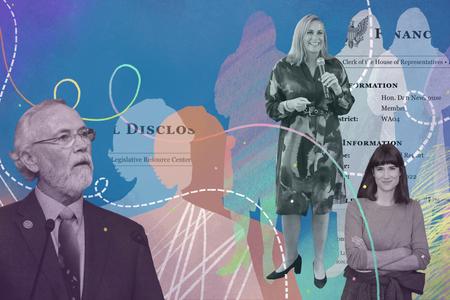With the election approaching, we started asking how political officials and candidates in Washington had benefited from stimulus grants and loans throughout the pandemic. We found hundreds of thousands of dollars in aid — millions in some cases — going to businesses tied to members of both political parties.
To be fair, all of the payments Crosscut found appear to properly qualify for their intended programs. Officials and candidates told us federal relief, particularly Paycheck Protection Program loans, had offered a key lifeline during the pandemic’s economic downturn. State officials also noted that because the programs were administered at the federal level, they had no influence over awards and had to independently apply like anyone else.
Many who talked to Crosscut said they supported transparency on federal relief, but added that if we could track down the payments, then the process was already transparent.
It wasn’t that simple.
While officials and candidates must file financial disclosure reports on their business interests to guard against conflicts of interest, many forms of COVID-19 stimulus don’t seem to fall under the reporting requirements. There is no centralized place for the public to check how much or what kinds of relief their officials have received.
To find the payments for our story, Crosscut compared a sample of official- or candidate-owned businesses from their disclosure reports against public listings of federal relief payments. Those searches often resulted in matches to incorrect businesses with similar names. Some searches brought up different payments depending on punctuation. Other results list payments that were turned down.
Results also left out state or local stimulus programs and federal programs that haven’t released detailed payment data.
You can help us close some of those gaps. If you would like to try your hand at this somewhat tedious matching process, you can check out the how-to guide at the end of our story and enter your findings in our nine-question survey. Those survey answers feed into a centralized spreadsheet that could help provide a more in-depth look at what kind of relief officials have received statewide.
To learn more about our efforts to dig into federal recovery spending in Washington, sign up for our new monthly Crosscut Investigates newsletter to keep up on reporting strategies, public data tools and related watchdog coverage from other regional newsrooms.
Get the latest investigative news
A newsletter for resources, data and behind-the-scenes insight into investigative efforts.





